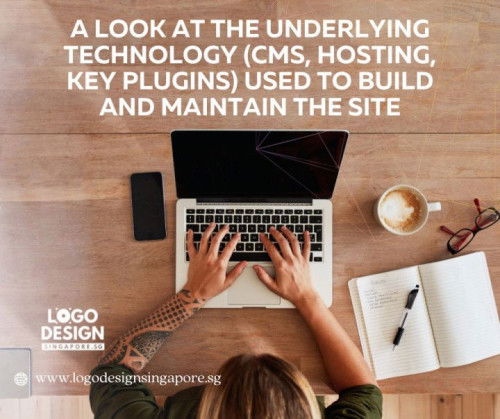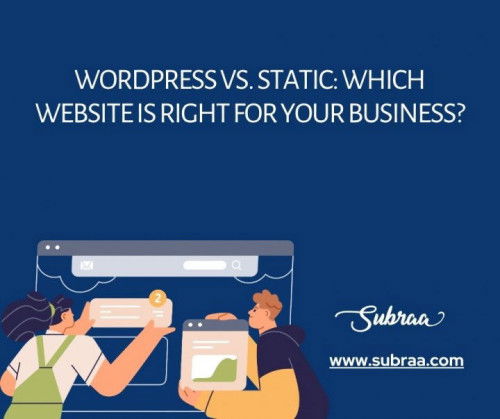

The Psychology of Touch: How Textures Transform Business Card Perception -Logo Design
Networking often starts with a LinkedIn request or an email signature, the business card continues to hold its ground as a tactile ambassador of your brand. While the fonts, colors, and layout are undeniably important, one often overlooked element — texture — can make or break how your business card is perceived. Why? Because touch is deeply psychological. Welcome to the intersection of design and psychology — where your business card’s texture tells a story before a single word is read. Touch: The Most Underrated Sense in Branding Visuals dominate the world of marketing. We spend time choosing logos, colors, and images that speak to our brand personality. But what about touch? Touch is a powerful, subconscious communicator. According to neuroscientific studies, people form lasting judgments about objects — and even other people — based on haptic (touch-related) cues. This is why textured surfaces often feel more “premium” or “trustworthy” than flat, smooth ones. When someone holds your business card, they are not just looking at your name or title. They are feeling your brand. The First Impression Starts in the Fingers Within the first three seconds of receiving a business card, the recipient has already formed a perception of your professionalism and brand identity. Much of this perception happens through their fingertips. Let’s break it down: Soft textures (like velvet or suede finishes) are often associated with luxury, elegance, and high-touch service. Rough textures (like kraft paper or uncoated stock) suggest authenticity, sustainability, and rugged reliability. Smooth, glossy finishes can evoke modernity, sleekness, and corporate professionalism. Embossed or debossed textures create depth and memory — literally and psychologically. This sensory input sticks — people are more likely to remember and retain business cards that feel distinct. How Texture Impacts Business Card Perception Trust and Credibility Texture adds weight — both literally and symbolically. A flimsy, paper-thin business card sends a message of cheapness or lack of effort. In contrast, a thick, textured card immediately conveys that thought, care, and resources were invested into presentation. Subconsciously, that translates to trust. For industries where reliability is paramount (finance, legal, consulting), a card with textured linen or heavy cotton stock can elevate your credibility instantly. 2. Memory Retention Cognitive psychologists have long studied the “von Restorff effect” — the idea that things which stand out are more likely to be remembered. A textured business card that feels different is more likely to be retained, noticed, and remembered. In a stack of 30 standard cards, the one with a letterpress imprint or a sandpaper-like finish will catch the hand and eye every time. 3. Perceived Value A premium-feeling business card can change how people value your services. It’s not just a piece of card stock — it becomes a symbol of your brand’s worth. For luxury brands, real estate professionals, or creative agencies, investing in high-end textures like suede touch, metallic foils, or soft-touch laminates suggests exclusivity and quality. Popular Textured Finishes and What They Communicate Let’s explore how different textures subtly shape business perceptions: Soft-Touch (Velvet or Suede Lamination): Silky and luxurious to the touch, this finish tells your client that your brand is premium, professional, and refined. It’s frequently chosen by consultants, luxury brands, and high-end service providers. Embossing/Debossing: These finishes raise or indent portions of the card, like logos or names, adding dimension and tactility. It gives the sense that your brand pays attention to details and wants to leave a lasting impression. Linen Texture: Subtle ridges mimic the weave of fine fabric. Often associated with tradition, respectability, and classic professionalism, this texture is popular in finance, law, and education. Kraft Paper or Recycled Stock: With a natural, earthy feel, this texture resonates with eco conscious and artisanal brands. It suggests that your business values sustainability and authenticity. Spot UV Coating: A glossy coating applied selectively to parts of a matte card, offering contrast in texture. It reflects innovation and sleek sophistication, favored by tech firms and modern startups. Psychological Case Study: Texture in Action Imagine you’re at a networking event. Two people hand you their business cards. One is a glossy, thin rectangle — common and quickly forgettable. The other is a thick, suede-finished card with an embossed logo and a smooth UV-spot on the company name. Instinctively, your f ingers linger. You examine it again, intrigued. Without realizing it, you’ve already: Judged the brand as higher-end Assigned more value to the service Created a lasting sensory memory This is not about spending more. It’s about spending smart — using psychology to amplify perception. Industry-Specific Recommendations Without a Table If you’re in finance or legal professions, textured matte or linen finishes give an air of sophistication and dependability. A high-quality embossed logo shows attention to professionalism and detail. For those in tech or startups, clean matte finishes with UV spot detailing can communicate innovation and clarity. Combining a minimalist design with a slick texture says, “we’re sharp and future-focused.” Real estate professionals benefit from tactile finishes that exude polish and luxury — such as suede or soft-touch laminates paired with foiling or raised ink. Creative agencies often push boundaries — uncoated papers, recycled stocks, or letterpress designs with hand-crafted vibes are ideal for communicating authenticity, creativity, and uniqueness. Eco-conscious businesses can reflect their core values by using textured recycled stock, kraft paper, or cotton rag with raw edges. These tactile choices speak directly to the sustainability minded consumer. Luxury brands benefit from thick stock, metallic foil stamping, and velvet-touch finishes — tactile elegance that aligns with premium price points and exclusivity. Don’t Just Design — Strategize It’s tempting to focus only on visual layout, but a winning business card is a strategic sensory experience. Consider these tips: Think beyond ink. Your logo might look good on screen, but how does it feel when pressed into cotton stock or highlighted with UV gloss? Test multiple textures. Order sample packs to feel what aligns best with your brand. Balance feel and function. Some textured cards may not be ideal for writing on. If you need to jot appointments or notes, go for uncoated back surfaces. Digital vs. Physical: Why Texture Still Wins Some argue that digital business cards are the future. While digital cards have their place, they lack the multi-sensory impact of a physical card — especially in face-to-face networking. Physical business cards: Make eye contact and handshakes more memorable Allow people to feel your brand Stay in wallets, desks, and pockets — longer than digital ones stay in apps In a world filled with fleeting screens, something tangible stands out. Final Thoughts: The Science of First Touch Every detail on your business card contributes to a narrative — and texture speaks volumes. It bypasses logic and hits the emotional brain instantly. The feel of a card can communicate reliability, innovation, creativity, or luxury — all in a split second. Don’t underestimate the power of touch. By thoughtfully choosing your business card design texture, you turn a simple piece of paper into a memorable experience. In networking, that can be the difference between being remembered — or being forgotten. visits us : https://www.logodesignsingapore.sg/
Đọc thêm
Why Regular Grooming is More Than Just Aesthetic for Your Dog’s Wellbeing-The Pets Workshop
When many pet owners think of grooming, they often imagine perfectly styled fur, neat haircuts, and cute accessories that make their dogs look their best. While appearance is a visible benefit, dog grooming Singapore is much more than an aesthetic ritual. It is a vital part of a dog’s overall health and wellbeing, directly impacting their physical comfort, emotional state, and quality of life. This article explores why regular grooming is essential beyond aesthetics, highlighting its health benefits, psychological impact, and practical role in preventive care for your beloved canine companion. 1. Skin Health and Early Problem Detection Regular dog grooming sessions keep your dog’s skin clean, moisturised, and free of irritants. Here’s why: A. Removal of Dirt and Debris Daily walks, playtime, and outdoor activities expose your dog to dust, pollen, mud, and environmental pollutants. Without regular brushing and bathing, these can accumulate in their coat, leading to clogged pores, irritation, and even infections. B. Distribution of Natural Oils Brushing stimulates the skin and distributes natural oils evenly across the coat. These oils keep your dog’s skin moisturised, preventing dryness, flakiness, and itchiness. This natural moisturisation also enhances coat shine and softness. C. Early Detection of Health Issues During grooming, you or your professional groomer can spot: Unusual lumps or bumps Skin infections or rashes External parasites like ticks and fleas Cuts, bruises, or abrasions hidden under the fur Early detection allows for prompt veterinary intervention, potentially preventing minor issues from escalating into serious health problems. 2. Prevention of Painful Mats and Tangles For breeds with medium to long coats, matting is a serious concern: A. Discomfort and Pain Mats pull on the skin, causing discomfort or pain, especially if they form close to sensitive areas like armpits, ears, groin, or under the collar. Severe mats can restrict movement, leading to muscle soreness and joint stiffness. B. Skin Damage and Infections Mats trap moisture and dirt close to the skin, creating an ideal environment for bacterial or fungal growth. This can lead to sores, infections, or hot spots, requiring medical treatment. Regular brushing and professional grooming prevent matting, ensuring your dog remains comfortable and their skin stays healthy. 3. Nail Trimming: More Than Just Neatness Nail trimming is an integral part of dog grooming Singapore that is often overlooked by owners. Long nails are not just unsightly; they can cause: A. Painful Posture and Joint Problems When a dog’s nails grow too long, it affects how they place their paws on the ground. This alters their gait, putting unnecessary pressure on their joints and leading to discomfort or arthritis over time. B. Injuries Long nails can snag on carpets or outdoor surfaces, causing painful tears or breaks that may require veterinary attention. C. Damage to Home Interiors Long nails can scratch floors, furniture, and car interiors, leading to avoidable damage and maintenance costs. Regular trimming ensures your dog walks comfortably while preventing accidental injuries and damage to your belongings. 4. Ear Cleaning to Prevent Infections Ear cleaning is another essential pet grooming Singapore task: A. Removal of Wax and Debris Regular ear cleaning removes accumulated wax, dirt, and debris that can block the ear canal and lead to infections. B. Prevention of Painful Ear Infections Dogs with floppy ears or heavy fur around their ears are more prone to infections due to limited airflow and moisture build-up. Routine cleaning prevents bacterial or yeast growth, keeping your dog comfortable and infection-free. C. Early Detection of Issues Regular inspection allows you to detect signs such as redness, foul odour, or excessive discharge, prompting timely veterinary care before problems worsen. 5. Dental Hygiene: The Overlooked Grooming Necessity Dental care is often neglected but is a critical part of dog grooming Singapore: A. Prevention of Plaque and Tartar Build-Up Brushing your dog’s teeth and providing dental chews reduce plaque and tartar, preventing gum diseases and tooth decay. B. Avoidance of Bad Breath Poor dental hygiene leads to bad breath, which is unpleasant for both the dog and its owners. C. Protection from Systemic Diseases Bacteria from untreated dental issues can enter the bloodstream, potentially causing heart, liver, or kidney diseases. Regular dental care ensures not just fresh breath but also supports overall organ health. 6. Emotional and Psychological Benefits Grooming is not just a physical need but also an emotional one for dogs: A. Stress Relief Regular grooming routines, if introduced gently, become calming activities for dogs. The touch, brushing, and massage-like strokes reduce anxiety and promote relaxation. B. Strengthening Bond with Owners Grooming sessions enhance the bond between dogs and their owners. This intimate time builds trust, affection, and a sense of security in your dog. C. Improved Behaviour Well-groomed dogs often feel more comfortable and less irritable, positively influencing their behaviour and social interactions with humans and other pets. 7. Temperature Regulation For dogs with dense double coats or long fur, grooming plays a crucial role in regulating body temperature: A. Prevention of Overheating Removing excess undercoat during shedding seasons prevents heat retention, reducing the risk of overheating, heat stress, or heatstroke. B. Insulation in Cold Weather Regular grooming maintains a healthy coat that effectively insulates the dog during cold weather, ensuring comfort throughout seasonal changes. 8. Flea and Tick Prevention Regular grooming acts as a frontline defence against external parasites: A. Early Detection Brushing and inspections reveal ticks or flea infestations early, enabling prompt treatment and preventing the spread to other pets or humans. B. Preventing Skin Reactions Removing dead hair and debris reduces the chances of flea allergy dermatitis, ensuring your dog’s skin remains healthy and irritation-free. 9. Professional Grooming Expertise Professional dog groomers bring expertise that goes beyond what most owners can provide at home: Breed-Specific Grooming: Professionals understand the unique coat care requirements of different breeds, ensuring proper maintenance without damaging fur texture or skin. Safe Handling: Groomers are trained to handle nervous or reactive dogs safely, minimising stress during grooming sessions. Comprehensive Services: From sanitary trimming to anal gland expression, professional grooming covers aspects essential for hygiene and health that owners may miss. 10. Preventive Healthcare and Long-Term Cost Savings Regular grooming plays a preventive role, reducing long-term healthcare costs: Preventing infections, infestations, and injuries avoids expensive veterinary treatments. Maintaining dental hygiene prevents costly dental surgeries. Detecting health issues early leads to timely and more affordable treatments. Thus, grooming is not an expense for aesthetics but a wise investment in your dog’s lifelong wellbeing. Conclusion Regular dog grooming in Singapore is not merely about achieving an aesthetically pleasing appearance. It is a comprehensive wellness practice encompassing physical health, emotional comfort, preventive care, and improved quality of life. Grooming sessions help maintain skin and coat health, prevent painful mats and infections, ensure comfortable mobility, regulate body temperature, and strengthen the bond between you and your dog. By embracing grooming as an essential part of your dog’s routine, you are not just keeping them beautiful but safeguarding their health, happiness, and longevity. Ultimately, grooming is an act of love, care, and responsibility — the cornerstone of a life where your dog thrives confidently, comfortably, and joyfully every single day. Visits us : https://www.thepetsworkshop.com.sg/
Đọc thêm

Professional Cat Grooming: Skills & Solutions — The Pets Workshop
Cat grooming Singapore is an essential part of feline care, ensuring that a cat’s coat, skin, and overall hygiene remain in top condition. Unlike dogs, cats are known for their self grooming habits, but this does not eliminate the need for professional grooming. Many cat owners and groomers face significant challenges when it comes to maintaining a cat’s grooming routine, from handling aggressive behavior to dealing with matting and shedding. Enrolling in a professional cat grooming course can provide the necessary skills and knowledge to handle these challenges effectively. This article explores the common challenges in cat grooming and how a professional course can help groomers perfect their skills. Common Challenges in Cat Grooming 1.Handling Aggressive Cats One of the biggest difficulties in cat grooming in Singapore is handling aggressive or anxious cats. Unlike dogs, many cats are not accustomed to being bathed, brushed, or having their nails trimmed. This can lead to biting, scratching, or general resistance during grooming sessions. How a Professional Course Helps: Teaches handling techniques to calm anxious cats. Introduces safe restraint methods that minimize stress for both the groomer and the cat. Provides insights into feline behavior, allowing groomers to anticipate and address signs of distress. 2. Matting and Shedding Problems Long-haired breeds like Persians and Maine Coons are prone to matting, which can cause skin irritation and discomfort. Additionally, excessive shedding can lead to hairballs and a messy home environment. How a Professional Course Helps: Provides training on how to safely detangle and remove mats without causing pain. Teaches effective brushing techniques tailored to different coat types. Educates groomers on proper de-shedding tools and products. 3. Bathing Challenges Many cats dislike water, making bath time a stressful experience. Without proper training, an unprepared groomer may end up causing more harm than good. How a Professional Course Helps: Covers waterless grooming alternatives for cats that dislike baths. Demonstrates safe bathing techniques to reduce fear and resistance. Provides guidance on selecting cat-friendly shampoos and conditioners. 4. Nail Clipping Difficulties Cats have retractable claws that require regular trimming to prevent overgrowth and injury. However, trimming a cat’s nails can be tricky, especially if the cat is uncooperative. How a Professional Course Helps: Offers step-by-step demonstrations on safe nail trimming. Provides tips on introducing nail trimming gradually to anxious cats. Explains the importance of using the right clippers and avoiding cutting too deep. 5. Ear Cleaning and Hygiene Maintenance Many cats suffer from ear infections or wax buildup, which can lead to discomfort and health issues. Proper ear cleaning requires a delicate approach to avoid harming the cat’s ears. How a Professional Course Helps: Teaches the correct method for cleaning ears without causing irritation. Identifies signs of common ear infections and how to address them. Provides guidance on recommended ear cleaning solutions. 6. Grooming Senior Cats or Cats with Health Conditions Older cats or those with medical conditions often require special grooming techniques to accommodate their needs. How a Professional Course Helps: Provides knowledge on handling arthritic or sensitive cats gently. Teaches alternative grooming approaches for cats with skin allergies or medical conditions. Educates groomers on monitoring signs of health issues during grooming. The Role of a Cat Spa in Grooming Excellence Professional cat grooming in Singapore extends beyond basic maintenance to include luxury services offered at a cat spa. These services enhance the grooming experience and contribute to a cat’s overall well-being. 1.Therapeutic Massages A professional cat spa often includes massages that help with relaxation and circulation. 2. Coat Conditioning Treatments Specialized treatments such as deep conditioning help nourish a cat’s coat, making it soft and healthy. 3. Aromatherapy and Stress Relief A cat spa experience includes aromatherapy options designed to calm anxious cats and create a positive grooming environment. Pet grooming presents several challenges, from handling aggressive felines to addressing coat matting and hygiene concerns. A professional cat grooming course provides the essential training needed to handle these challenges with skill and confidence. By learning the best techniques for bathing, brushing, nail trimming, and even providing cat spa treatments, groomers can ensure that cats receive the best care possible. Investing in professional grooming education not only enhances the groomer’s expertise but also significantly improves the grooming experience for cats and their owners alike. Visit our Site : https://www.thepetsworkshop.com.sg/ #Petgrooming #Professionalcatgrooming inSingapore
Đọc thêm
The Power of Abstract Logo Design — Logo Design Singapore
An abstract logo design offers a unique and versatile way to stand out. Unlike literal or representational designs, abstract logos use shapes, colors, and patterns to convey a brand’s essence, leaving room for interpretation and evoking strong emotional connections. Whether you’re working with a professional logo design Singapore agency or a freelance logo designer Singapore, abstract logos are a powerful option for crafting a memorable brand identity. What Makes Abstract Logo Design Unique? Abstract logos don’t rely on familiar symbols or imagery, making them distinct and timeless. They use geometric forms, dynamic patterns, or creative compositions to reflect a company’s values and vision. For example, a swirl may signify innovation, while angular shapes can represent strength and stability. This open-ended nature ensures that the design remains relevant even as the business evolves. Why Abstract Logos Are Ideal for Business Logo Design Abstract logos are particularly effective for business logo design because they balance creativity and adaptability. Their simplicity ensures that the design works across multiple platforms, from business cards and websites to packaging and large-scale advertising. Additionally, abstract logos are easy to customize with color schemes and gradients that align with your brand identity, ensuring consistency in your marketing efforts. How Freelance Logo Designers Excel at Abstract Design When collaborating with a freelance logo designer, you gain access to a tailored approach that aligns with your vision. Freelancers often excel at abstract logo design because they bring fresh perspectives and innovative ideas. They take the time to understand your brand’s mission, allowing them to craft a logo that resonates with your audience while standing out in your industry. Abstract logo design is a versatile and impactful way to represent your brand. By partnering with a professional, such as a freelance logo designer, you can create a unique and enduring symbol that captures the essence of your business and ensures it leaves a lasting impression. Explore Our Website : https://www.logodesignsingapore.sg/
Đọc thêm
Elevate Your Brand: The Benefits of Abstract Logo Design — Logo Design Singapore
An abstract logo design offers a unique and versatile way to stand out. Unlike literal or representational designs, abstract logos use shapes, colors, and patterns to convey a brand’s essence, leaving room for interpretation and evoking strong emotional connections. Whether you’re working with a professional logo design Singapore agency or a freelance logo designer Singapore, abstract logos are a powerful option for crafting a memorable brand identity. What Makes Abstract Logo Design Unique? Abstract logos don’t rely on familiar symbols or imagery, making them distinct and timeless. They use geometric forms, dynamic patterns, or creative compositions to reflect a company’s values and vision. For example, a swirl may signify innovation, while angular shapes can represent strength and stability. This open-ended nature ensures that the design remains relevant even as the business evolves. Why Abstract Logos Are Ideal for Business Logo Design Abstract logos are particularly effective for business logo design because they balance creativity and adaptability. Their simplicity ensures that the design works across multiple platforms, from business cards and websites to packaging and large-scale advertising. Additionally, abstract logos are easy to customize with color schemes and gradients that align with your brand identity, ensuring consistency in your marketing efforts. How Freelance Logo Designers Excel at Abstract Design When collaborating with a freelance logo designer, you gain access to a tailored approach that aligns with your vision. Freelancers often excel at abstract logo design because they bring fresh perspectives and innovative ideas. They take the time to understand your brand’s mission, allowing them to craft a logo that resonates with your audience while standing out in your industry. Abstract logo design is a versatile and impactful way to represent your brand. By partnering with a professional, such as a freelance logo designer, you can create a unique and enduring symbol that captures the essence of your business and ensures it leaves a lasting impression. Know More: https://www.logodesignsingapore.sg/ #Freelancelogodesigner #logodesigner
Đọc thêm






